One of the master keys to understanding the inefficacy of many charities is seeing all the ways in which a lack of board engagement can mire a nonprofit in a culture of mediocrity. Nonprofit leaders are left wondering what they did to make once-enthusiastic board candidates disappear while the board members themselves, busy with full-time vocational obligations and other commitments, believe they’re doing pretty well to show up to board meetings and make the occasional gift. Nonprofit board retreats can help correct this unfortunate trend. When done well, a board retreat (or, my preferred term, summit) can help a board come together, rekindle passion for the cause, and inspire deeper engagement in the organization.

WHY SHOULD YOU HAVE A BOARD RETREAT IN 2023?
“Do we really have time for a retreat?”
A nonprofit board retreat may seem like a jarring and unnecessary stoppage in a busy year, but it’s a essential element of board governance. Here’s why your nonprofit should have a board retreat every year, including 2023:
Refreshing the Call to Lead
It’s only human nature that discretionary volunteer service, which is what nonprofit board membership is, can tend to slide to the back-burner of one’s life. A board retreat offers a unique opportunity to remind and excite board members about their original commitment to be leaders, not spectators.
Training in Nonprofitology
Not all board members have experience in nonprofit leadership, but board meetings offer little time for developing new knowledge or skills. A retreat provides a bit more time for you to train board members on important topics such as fundraising, volunteer management, and public relations.
Setting Clear Direction and Vision
Effective teams have teammates who share a common definition of winning. Nonprofit board retreats allow directors to reconnect with The Big Win and build consensus around a strategic plan for accumulating smaller wins over the next 3-5 years.
Managing Crisis
In the face of crisis, nonprofit leaders to be aligned on direction and message. A retreat can give your board the precious time it needs to discuss the problem, align on a response, and identify what each team member will do in the days ahead.
Celebrating Impact
Memorializing a big win can keep the afterglow going and forever seal a board member’s bond with the organization. Celebration retreats can also be a strong a culture-forming occasion, a this-is-who-we-are moment for the organization’s key leaders to cohere as team.

HOW TO PLAN YOUR NONPROFIT BOARD RETREAT
Elite athletes spend hundreds of hours preparing for just one hour of competition. Similarly, your board retreat represents such a significant moment in your organization’s timeline that it deserves careful planning and preparation to make the most of the board’s time together.
Here are some practical tips for planning your board retreat:
Chose a Theme for Your Retreat
Nothing captures the imagination and activates the hero in all of us like a good story. You can “storify” your board experience by assigning a named theme for your time together. NBA coach Phil Jackson was famous for heightening the team’s cinematic drama with named themes, including the “Last Dance” label he gave prior to the final 1998 season during which Michael Jordan’s Chicago Bulls won their sixth NBA championship. Personal growth focus? “The Greatness Within.” Big aspirations for fundraising? “Development 2.0.” Planning for serving 10,000 people? “Operation 10K.” Good teams have worthy objectives; great teams have epic stories.
Integrate Your Mission in a Memorable Way
One of the enduring legacies of the Toyota’s Lean leadership methodology is the Japanese term genshi genbutsu or “go and see.” There’s a magic in experiencing a situation firsthand that description alone can’t fully capture. The same is true of the need or problem your organization is trying to solve. Giving your board a chance to experience the real-world, grass-roots, nitty-gritty impact of your nonprofit work is the best way to bind the hearts of your board members to one another and to your mission. Placed early enough in the agenda, missional immersion is also a terrific way of helping board members discern the signal from the noise when doing official business in the retreat’s subsequent hours or days.
Solve for the Personalities of the Group
For years now, the Myers-Briggs Type Indicator has been my favorite of the personality tools for a number of reasons. Concerning board retreats, it’s utility is primarily in the E-I and N-S dichotomies. The “I” stands for introversion (those who gain their energy from solitude) and “E” for extroversion (gaining energy from people). The “N” stands for intuition (comfortable finding meaning in a big-picture, strategic view) and “S” for sensing (more comfortable with analyzing hard data). Be sure to craft the board retreat with the personalities of your board members in mind lest, e.g., you burn out the I’s with too much people time or lose the S’s with too much big-picture.
Laugh Together
Nothing takes relationships to another level quite like humor. Fun options abound: watch that funny Christmas movie together, go axe throwing, or start a running gag of harmless pranks. Whatever it is, make it something the entire group can feel a part of and that doesn’t unduly jeopardize the serious leadership work that needs to be done.
Recap to Lock-In Major Decisions
One of the biggest tragedies I see in retreats and summits is leaky decision-making. The whole group takes precious time away from their daily lives, works hard during the retreat, and days later the group is wondering what the concrete decisions were. It’s up to the founder, board chair, or executive director to cement the progress made in terms of hard decisions. State and restate where the group has landed at the close of every major session, at the end of each day, and the day after the retreat has concluded.

SHOULD YOU HAVE A FACILITATOR AT YOUR BOARD RETREAT?
Even if your organization has an experienced facilitator on the staff or board, the external perspective that a nonprofit consultant brings can make a significant difference to your retreat’s outcomes. The key to picking an effective facilitator is evaluating the extent to which they are willing to get to know your organization and your retreat participants before the retreat. A show-and-go facilitator won’t have the necessary depth of appreciation and insight for your team to be effective. Ideally, they would speak with each board member individually beforehand on, (1) what their EXPECTATIONS are for the retreat, (2) what they believe the organization should KEEP, and (3) what the organization should CHANGE.
Above all, partner with a consultant who pairs a tears-in-their-eyes appreciation for your organization’s culture with a command presence that can keep the retreat on-track toward its objectives.

NONPROFIT BOARD RETREAT FACILITATION BEST PRACTICES
Whether you’re bringing in an external facilitator or leading in-house, here are some helpful best practices:
- Interview all board members individually beforehand.
- Allow at least a half-day and ideally two full days.
- Choose a location that is offsite-ish enough to feel “away from it all.”
- Send the theme and some reflection questions ahead of time.
- Stock specific preferences of comfort snacks and drinks.
- Set the tone early with laughter and social connection.
- Begin the working time by celebrating the impact history of the nonprofit.
- Use round-robins to make sure even introverts share their ideas.
- Be willing to release the agenda if good things are happening.
- If you see a participant disengaging, pull them aside to understand why.
- Ensure all actions have clear owners and deadlines.
- Recap all decisions, actions, owners, and deadlines after the retreat.

KEY ACTION ITEMS FOR FOLLOWING THROUGH ON YOUR BOARD RETREAT
Board members are expecting an organizational return on the investment for their attendance and effort at the retreat. Capturing clear action items with owners and deadlines will ensure they come away believing the time was well spent.
Here are some practical tips for documenting the retreat and coming away with actionable next steps:
- Conclude each session by highlighting key decisions, actions, owners, and deadlines. Challenge each other to be clear on next steps using action verbs like call, review, contact, write, and lead.
- Ask for accountability permission at the time of assignment. “Would it be okay if I wrote you an email two days before it’s due to see how things are coming along?”
- Ask the board secretary to take effective meeting minutes, capturing essential arguments and decisions.
- While still at the retreat, agree on how future board meetings will be different going forward that reinforce and lock-in gains made during the retreat. For instance, a 10-minute check-in during future board meetings on retreat-related items.
- Ask board members to voice takeaways in their own words. At the close of each session, and at the end of the retreat itself, go around the room asking for each person’s takeaway.
- Congratulate and celebrate. A nonprofit retreat or summit takes lots of organizational energy and time to pull off. Celebrate this tremendous achievement.

LET SPARROW LEVEL UP YOUR BOARD DEVELOPMENT
A nonprofit board retreat that helps your board members be at their reflective, effective, engaged, and inspired best takes extensive planning. Expert external facilitation from Sparrow Nonprofit Solutions can allow you to be a full participant in the retreat and rest easy that the outcome will be amazing.
Ready to upgrade your board retreat/summit? Contact us today and let’s talk about it.



